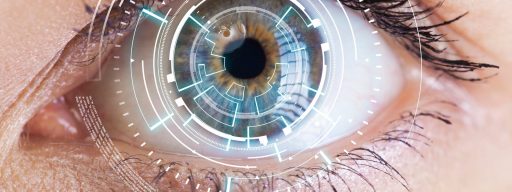When cataract development advances to a point when vision is severely affected and cannot be improved through the use of spectacles, the patient experiences difficulty with his daily activities at work or at home. Reading or driving a car becomes a real problem. In such situations, cataract extraction with intraocular lens (IOL) implantation is the optimal solution. Like the natural lens, an IOL, or artificial lens, refracts the light rays entering the eye and allows them to be projected onto the retina, forming a clear, sharp image.
Several types of IOLs are currently available, varying by design and materials. The surgeon’s choice takes into account individual eye characteristics, the health of the eye structures, and the visual needs of the patient.
The most common solution is to restore distance vision, with reading and some other near-range activities requiring the use of glasses. Monofocal lenses have this limitation because they are not able to change their shape when the patient looks at objects at different distances and ranges. Nevertheless, they are a very useful and well-proven solution used by eye surgeons for decades.
Monofocal IOLs provide:
- High quality light and colour perception.
- Good image contrast.
- Absence of major unwanted optical effects.

You can make an appointment by phone from 8:30 to 19:30 (daily).
Depending on the patient’s specific daily needs, a monofocal IOL can be selected based on one of two different calculations:
- With distance focusing. This option provides good vision for distant objects and is great for driving a vehicle. For sewing or reading, working with a computer or tablet, the patient needs to use glasses, most often varying from + 1.0 to +3.0 dioptres.
- With near focusing. Such a lens will help return to perfect vision at close range; the patient can freely read and use a computer, but for driving and watching TV, glasses ranging from -1.0 to -3.0 dioptres are needed.
Monofocal intraocular lenses are divided into spherical and aspheric, based on the shape of their surface. Those with an aspheric shape more accurately replicate the optics of the natural lens, providing a sharper image.
The technology of implanting artificial lenses is constantly improving and, today, age-related cataract is not the only indication. Lens replacement can also be advised for some cases of:
- Angle-closure glaucoma combined with cataract.
- High myopia.
- High hyperopia.
- Presbyopia.
Based on the results of the examination, the ophthalmologist will select the best artificial lens for the patient, schedule surgery, and provide a list of postoperative recommendations. Modern equipment, high-quality instrument, and the skills of the surgeon are the key factors guaranteeing restoration of the best possible visual acuity.



